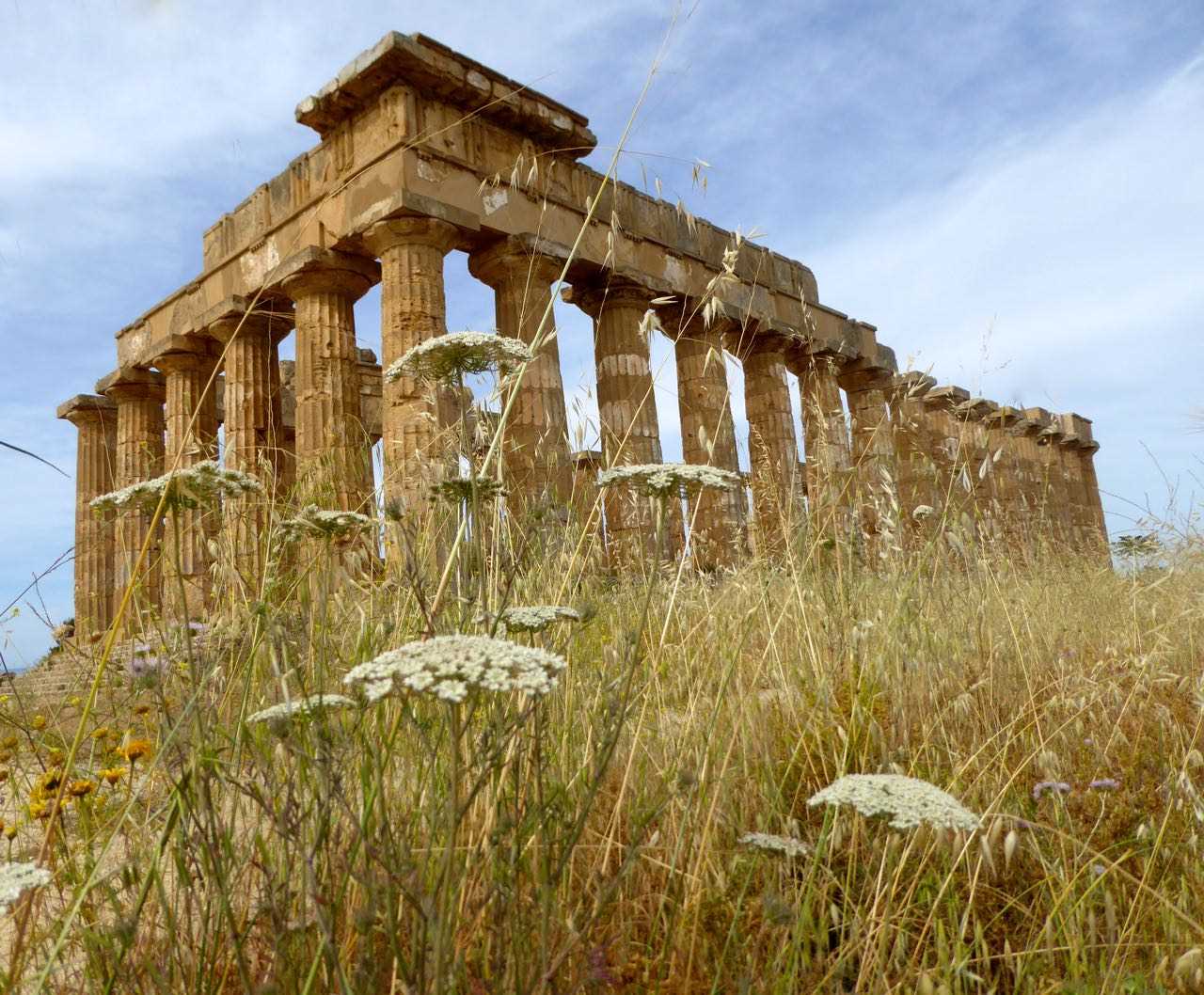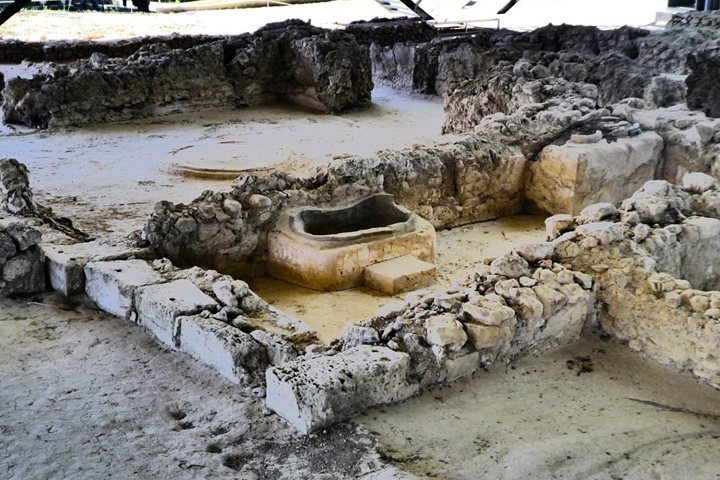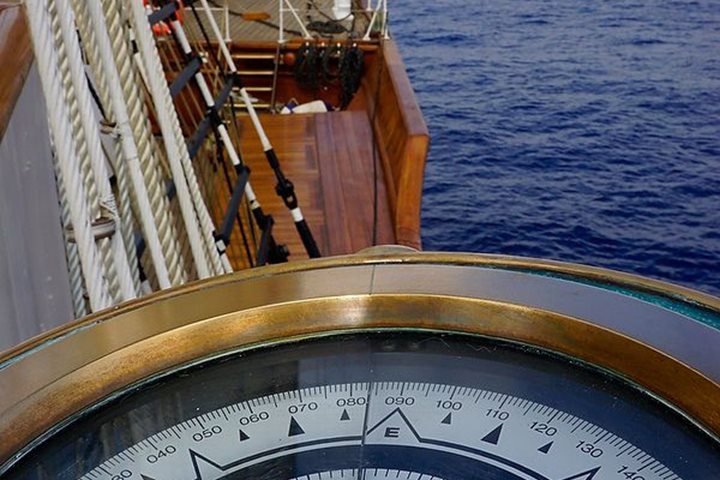Sicily is simply a landscape, but it is a landscape in which one finds absolutely everything which on this earth seems to have been made to seduce the eyes, the soul and the imagination.
Guy de Maupassant, En Sicile, 1886
Bathed in soft morning light, amidst fields of ripe winter wheat, wild carrot and marigolds, the massive, weathered sandstone columns of early 5th century B.C. Greek temple certainly seduced our eyes, camera lens, souls and imaginations. Almost certainly dedicated to the Goddess Hera, Temple E is the most complete of the seven temples at the site: four atop the walled acropolis and a further three on the eastern hill above the ancient harbor. For the rest of the morning we immersed ourselves in the legacy of ancient Greece as we explored the architectural and archaeological wonders of the Selinunte. Many choose to stretch their legs and hike amongst the wildflowers and pine trees that filled the valley between the two hills of the city. The impressive ancient city walls were covered with ripe caper plants, while the ruined houses of the acropolis were filled with rows of spiny acanthus.
We returned to the ship for a lunch of fresh sea bass and salad before heading out for a visit to the island of Motya, once a Phoenician strong hold and busy trading port which in the 19th century had been bought by Joseph Whittaker, an English wine merchant based in Marsala. Located in a shallow lagoon that is bordered by salt pans, Motya was built by Phoenicians from Carthage at the end of the 8th century B.C. We had a chance to visit the famous cothon, now thought to be a reflecting pool in a temple complex dedicated to the god, Baal Hammon rather than a harbor. We also visited a small museum which houses not only a large collection of Punic grave steles, but also the seductive Parian marble statue of the youth with a slender, athletic body clad in a diaphanous pleated tunic that suggests more than it hides. Sadly missing it arms, this masterpiece was almost certainly carved in the 5th century B.C., and is thought to have been looted from Selinunte after that city was sacked by Carthage in 409 B.C. Its exact identity and context still remain an enigma.
Wine tasting at the Florio cellars was our final stop of the day. The heady aroma of the old portside warehouses filled with oak barrels of Marsala wine seemed a perfect ending of the day!







